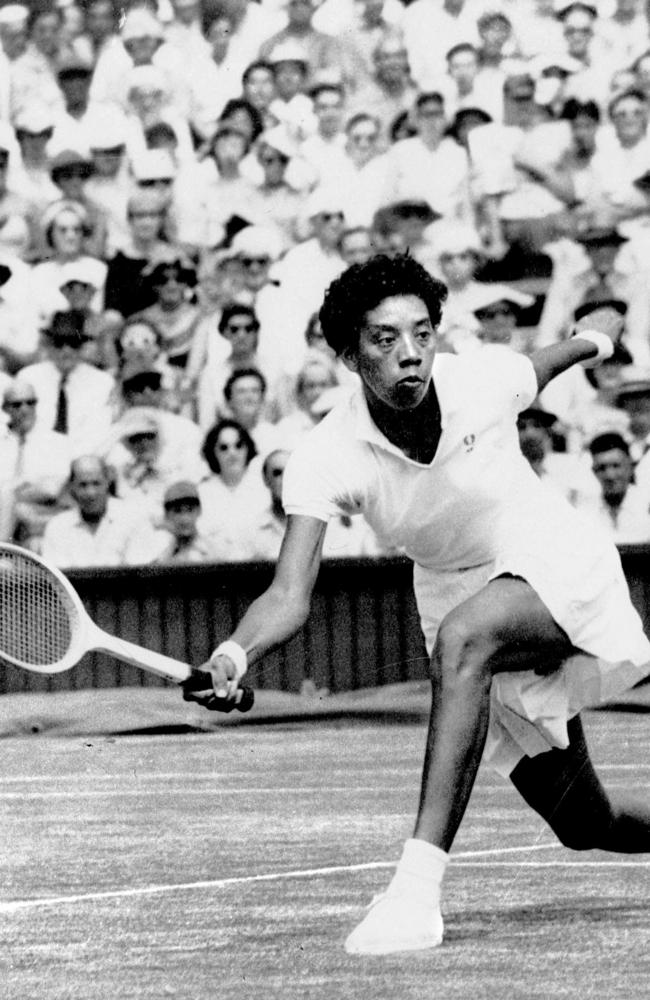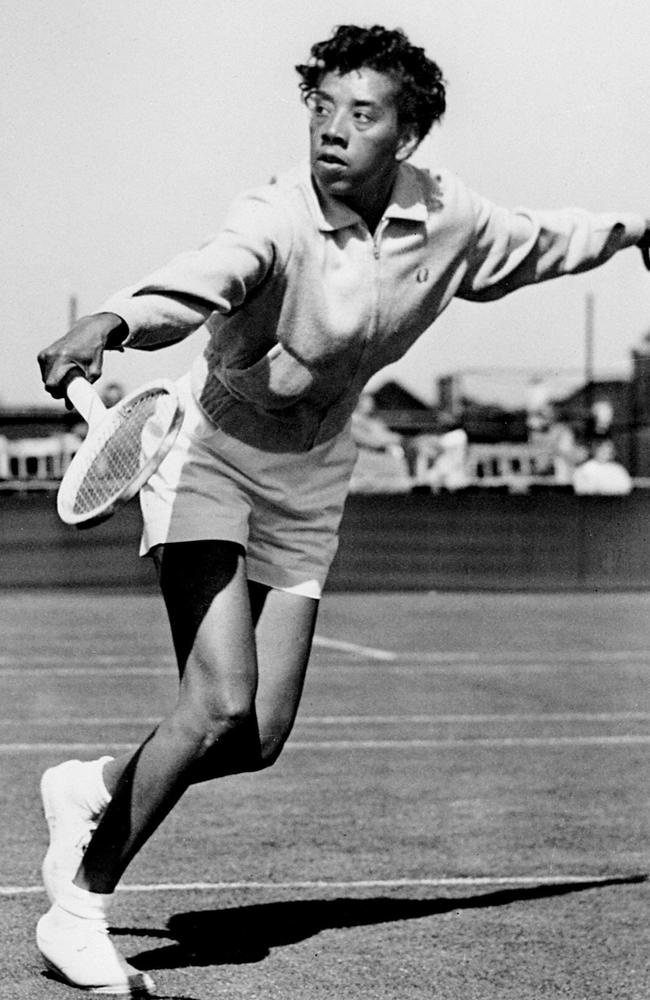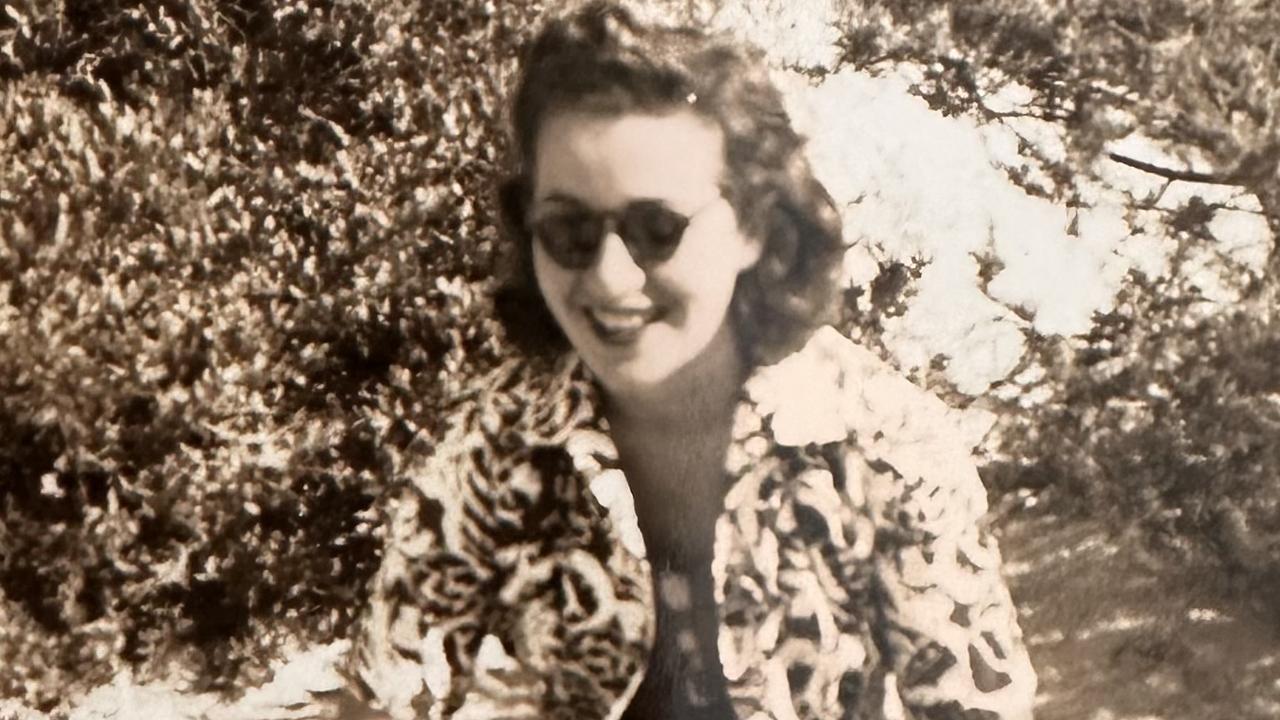Althea Gibson broke Wimbledon colour barrier with first singles win
“At last; at last,” Althea Gibson enthused with a broad smile as Queen Elizabeth congratulated her and presented the Wimbledon women’s singles trophy 60 years ago today.

Today in History
Don't miss out on the headlines from Today in History. Followed categories will be added to My News.
At last; at last,” Althea Gibson enthused with a broad smile as Queen Elizabeth congratulated her and presented the Wimbledon women’s singles trophy 60 years ago today.
It had been almost 15 years since Gibson owned her first tennis racquet, and seven years after she became the first African-American to compete in the US Grass Court Championships, now the US Open, at Forest Hills.
Although the first black to win Wimbledon, claiming victory over Californian Darlene Hard in 50 minutes on July 6, 1957, Gibson resisted being labelled as a crusader. Asked if she was proud to be an outstanding representative of her race, Gibson replied: “No. I don’t consider myself to be a representative of my people. I am thinking of me and nobody else.’’

Standing 180.3cm and boasting a powerful serve and volley, on a visit to Australia in mid-December 1956 Gibson struggled against her greatest weakness, foot-faults on service.
Playing at Kooyong in the Victorian Women’s Singles championship against Wimbledon champion Shirley Fry on a damp Saturday afternoon, Gibson was foot-faulted 21 times.
“Once after being footfaulted Miss Gibson slammed a ball into the members’ reserve,” the Melbourne Argus wrote. “The ball hit Lawn Tennis Association of Victoria vice-president Mr. T.G. Evans, who was sitting only a few feet away from the Prime Minister,
Mr Robert Menzies.”
A special foot-fault judge brought on after the 16th call also faulted Gibson five times, angering spectators who jeered “Boo” from the sideline, calling out “give her a go” and “change the linesmen”. A few minutes after her angry lob into the crowd, Gibson apologised to Evans, “who smiled and lifted his hat”.
“Negress at the nets” announced Gibson’s first appearance at Forest Hills in September 1950. “Svelte, brown skinned Althea Gibson didn’t win her match ... but the 22-years-old Negro girl made history at Forest Hills just the same,” newspapers reported. “And many observers that day said it was just the first chapter of Althea’s history.”
Gibson was born to sharecroppers Daniel and Annie Bell Gibson on a cotton farm at Silver, South Carolina, on August 25, 1927. Forced off the farm by the Great Depression in 1930, the family moved to 143rd Street, Harlem, where Gibson’s three sisters and brother were born. Their apartment was between Lenox and Seventh Avenues, designated as a Police Athletic League play area and barricaded during the day so children could play organised sports.

A gifted athlete, Gibson first played paddleball with PAL in 1936. In 1939 she was New York City women’s paddle tennis champion, but at school found it difficult to get along with teachers. After repeated truancy, she was threatened with reform school. She dropped out at 14, but unable to hold a job was made a ward of the state.
Harlem bandleader and part-time PAL supervisor Buddy Walker, who recognised her natural tennis talent and bought her a second hand racquet, introduced her to Harlem’s Cosmopolitan Tennis Club. Gibson found the club attracted “the highest class’’ of Harlem residents, people who “had rigid ideas about what was socially acceptable. I’m ashamed to say,’’ she wrote, “that I was still living pretty wild.’’
Impressed by her skill, members invited her to take lessons with the club’s resident professional. Gibson entered, and won, her first tournament, the 1941 American Tennis Association New York State Championship.
She won the ATA girls’ division national championship in 1944 and 1945, and after losing in the women’s final in 1946, she won her first of 10 straight national ATA women’s titles
in 1947.
“I knew I was an unusual, talented girl, through the grace of God,” she later wrote. “I didn’t need to prove that to myself. I only wanted to prove it to my opponents.”
Under the patronage of physician Walter Johnson, active in the African-American tennis community, Gibson took more advanced tennis lessons and in 1946 moved to North Carolina, supported by another physician and tennis activist, Hubert. Eaton. She also enrolled at high school and in 1949 entered Florida Agricultural and Mechanical University on an athletic scholarship.
Also a gifted musician, Gibson’s victories included the 1957 US Open and Wimbledon again in 1958.
“She is one of the greatest players who ever lived,” said Robert Ryland, a former coach of current champions Venus and Serena Williams. “I think she’d beat the Williams sisters.”
Gibson, who later played professional golf, died in 2003.

